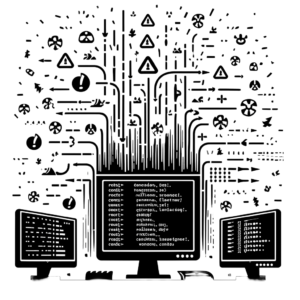Understanding Pentesting of Desktop Applications
In today’s world, it’s important to keep your software safe from hackers to protect your personal information. One way to do this is by testing your desktop application thoroughly for vulnerabilities, like checking for DLL injection. This can help you find any weak spots that hackers could use to get into your system without permission.
Pentest desktop applications involves simulating real-world attack scenarios to assess the resilience of your software against intrusions. By testing for DLL injection vulnerabilities, you can identify and address any weaknesses in how your application loads dynamic link libraries, which could serve as entry points for malicious actors. Through systematic testing and analysis, you gain valuable insights into the security posture of your software and can implement effective countermeasures to mitigate risks.
In simple terms, it’s important to test your desktop applications for vulnerabilities to protect your software and data from hackers. By investing in regular testing, you can strengthen your defenses and keep your desktop applications safe from cyber attacks.
The Relevance of DLL Injection in Cybersecurity
DLL (Dynamic Link Library) injection is a common technique used in penetration testing to assess the security of desktop applications. This method involves injecting a malicious DLL file into the address space of a running process, allowing an attacker to execute arbitrary code within the context of the targeted application. Understanding DLL injection is crucial in identifying vulnerabilities in software and preventing potential cyber threats.
During a desktop application penetration test, DLL injection is often leveraged to uncover security weaknesses such as insecure coding practices, lack of input validation, and inadequate access controls. By simulating real-world attack scenarios, cybersecurity professionals can evaluate the effectiveness of existing security measures and recommend necessary remediation actions to secure the software.
Protecting your software from DLL injection attacks requires implementing strong security controls, such as code signing, sandboxing, and regular vulnerability assessments. By staying informed about the relevance of the attack in cybersecurity and proactively addressing potential risks, organizations can enhance their overall defense posture and safeguard sensitive data from malicious actors.
How DLL Injection Works
DLL Injection is a technique used by cyber attackers to manipulate the behavior of a computer program. They do this by inserting a piece of code, known as a dynamic-link library, into the program while it’s running. This allows the attacker to take control of the program and potentially gain access to sensitive information.
During a pentest of desktop applications, security professionals utilize DLL injection to simulate real-world attack scenarios and identify vulnerabilities in software. By understanding how DLL injection works, security experts can better protect software against potential threats, such as code execution, privilege escalation, and data theft.
One major problem with DLL injection is trying to prevent it from being detected by security programs or antivirus software. Those who engage in this kind of activity often use tricky tactics to avoid detection and maintain control over a compromised computer. By staying up-to-date on security measures and using secure coding practices, software developers can lower the risk of their programs falling victim to DLL injection attacks.
Potential Risks Associated with DLL Injection
When conducting a pentest of a desktop application, one critical area that cybersecurity experts should examine is the potential risks associated with DLL (Dynamic Link Library) injection. DLL injection involves the insertion of a malicious DLL file into a running process, allowing attackers to manipulate the behavior of the application and potentially gain unauthorized access to sensitive data.
One major danger of DLL injection is that hackers can sneak past security measures and go undetected by adding harmful code into normal programs. This could result in serious problems like stolen data, harm to your computer, and getting into private information without permission.
Additionally, DLL injection can also be utilized to escalate privileges on a system, allowing attackers to execute malicious code with higher permissions than they would normally have. This can result in complete system compromise and provide attackers with full control over the targeted system.
It is very important for companies to take steps to protect their software from DLL injection attacks. This includes putting strong security measures in place, regularly testing their systems for weaknesses, and keeping up to date on the latest cybersecurity threats and trends.
Techniques for Effective Penetration Testing
Fuzzing is an important technique in cybersecurity, especially when testing desktop applications for potential vulnerabilities such as DLL injection. By using fuzzing, cybersecurity experts can mimic different unexpected inputs to find weaknesses in software code that could be used by hackers for attacks. Fuzzing works by injecting messed-up and random data into software, helping to uncover vulnerabilities that might not be found with normal testing methods.
When it comes to protecting your software from DLL injection attacks, incorporating fuzzing into your penetration testing strategy is essential. By proactively identifying and addressing potential vulnerabilities through fuzz testing, organizations can fortify their software against threats and enhance its overall security posture. Fuzzing serves as a proactive measure to strengthen the resilience of software applications, enabling developers to patch potential security flaws before they can be leveraged by malicious actors for DLL injection attacks.

Code Review
When it comes to protecting your software from vulnerabilities like DLL injection, a thorough code review is essential. Conducting a comprehensive examination of your application’s source code can help identify potential security flaws that could be exploited by attackers. By scrutinizing the codebase line by line, security experts can pinpoint risky coding practices, insecure library usage, and other weaknesses that may leave your application susceptible to DLL injection attacks.
In a code review, developers and security experts team up to find and fix security issues in the application’s code. This teamwork makes the software safer and stops hackers from breaking into important systems using DLL injection. By using secure coding practices and checking your code regularly, you can make it harder for cyber threats to attack your software and data, keeping them safe from bad guys.
Defense Strategies Against DLL Injection
Applying Strong Coding Techniques
In the world of cybersecurity, using strong coding techniques is essential to protecting your software from possible threats like DLL injection. When performing a test to check for DLL injection vulnerabilities in a desktop application, it’s important to strengthen your code with strong security measures. By following secure coding practices, like validating input, encoding output, and handling errors correctly, developers can reduce the chances of harmful code being injected through dynamic link libraries.
By using secure coding techniques, you can make your software more secure and less likely to be hacked through DLL injection attacks. It’s also important to stay informed about the latest security threats in order to protect your software. Regularly reviewing your code, conducting security audits, and performing penetration testing can help make your software even more secure against potential DLL injection vulnerabilities.
Ultimately, by prioritizing strong coding techniques and embracing a proactive approach to cybersecurity, developers can proactively shield their applications from the perils of DLL injection and ensure the integrity and trustworthiness of their software.
Utilizing Security Patches and Regular Updates
Protecting your software from potential cyber threats is crucial in today’s digital age. One common method that attackers use to exploit vulnerabilities in desktop applications is through DLL (Dynamic Link Library) injection. As a part of a comprehensive penetration testing strategy, it is important to focus on securing your software through the utilization of security patches and regular updates.
Security patches are important updates that software companies release to fix known security weaknesses and safeguard your system from potential cyber attacks. Installing these patches in a timely manner helps to block hackers from accessing your system through certain vulnerabilities. Keeping your software up to date with regular updates also ensures that it has the latest security improvements to defend against new forms of cyber threats.
By staying on top of software updates and patches, you can protect your desktop applications from attacks that could compromise their security. This proactive approach reduces the risk of falling victim to potential breaches, such as DLL injection attacks.
Importance of Regular Penetration Testing
Regular penetration testing is essential for protecting your software, especially when it comes to desktop applications susceptible to vulnerabilities like DLL injection. By conducting routine penetration tests, you can identify and address security weaknesses before malicious actors exploit them. DLL injection is a common attack vector where an attacker inserts a malicious dynamic-link library into a process to manipulate its behavior, steal sensitive information, or disrupt the application’s functionality.
Penetration testing is like a practice drill for potential cyber attacks, helping you to check if your computer’s safety measures are able to respond effectively. It helps you make your computer defenses stronger, improves your overall security, and protects your software from possible security breaches. Because the methods and threats from cyber criminals keep changing, regular penetration testing is important to keep your computer applications safe and private.
Don’t wait for a security breach to realize the importance of regular penetration testing. Take proactive measures today to secure your software and minimize the risks associated with DLL injection and other potential vulnerabilities.
Trends and Future of Cyberattacks
DLL injection is a technique that cyber attackers often use to hack into systems and take control of software applications. As technology improves, cybercriminals are always coming up with new and complicated ways to carry out attacks. This means that it’s really important for organizations to keep up with the latest trends in cybersecurity. In the future, DLL injection attacks are expected to become even more advanced and harder to detect, making it even tougher to protect against them.
Ensuring the security of your software is important in order to protect it from cyberattacks. By closely examining your software and using strong coding practices, you can make it harder for hackers to infiltrate your system. Working with cybersecurity professionals and keeping up with new threats will help you stay one step ahead in defending your software against attacks like DLL injection.
In today’s changing world of cybersecurity, it’s really important for organizations to focus on strong security measures and proactive defense strategies to protect their software from DLL injection cyberattacks. By investing in cybersecurity education, training, and up-to-date technologies, businesses can lower their risks and keep their assets safe from bad guys who try to exploit weaknesses using DLL injection techniques.
